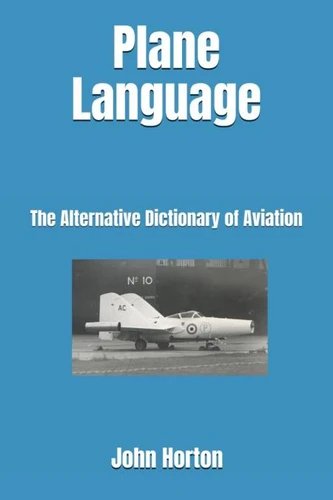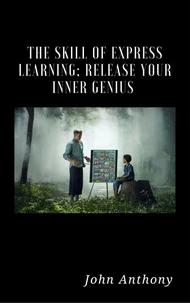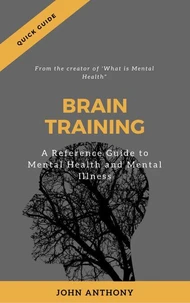Plane Language: The Alternative Dictionary of Aviation
Par :Formats :
Disponible dans votre compte client Decitre ou Furet du Nord dès validation de votre commande. Le format ePub est :
- Compatible avec une lecture sur My Vivlio (smartphone, tablette, ordinateur)
- Compatible avec une lecture sur liseuses Vivlio
- Pour les liseuses autres que Vivlio, vous devez utiliser le logiciel Adobe Digital Edition. Non compatible avec la lecture sur les liseuses Kindle, Remarkable et Sony
 , qui est-ce ?
, qui est-ce ?Notre partenaire de plateforme de lecture numérique où vous retrouverez l'ensemble de vos ebooks gratuitement
Pour en savoir plus sur nos ebooks, consultez notre aide en ligne ici
- FormatePub
- ISBN8224177721
- EAN9798224177721
- Date de parution05/06/2024
- Protection num.pas de protection
- Infos supplémentairesepub
- ÉditeurVirtued Press
Résumé
Plane Language is an Aviation book like no other. Part One explores the whole language and culture of aviation, from the origin of the very word Aeroplane itself (and why Americans prefer Airplane) through such terms as Blimp and Canard, Archie and Bucket of Sunshine. In over a thousand separate entries, Part Two records and examines aviation nicknames and colloquial terms, changed names, and the names of rare and lesser-known variants.
What famous jet was a Cheesefighter? What American airlifters were the Big Mac & the Quarter-Pounder, or the Barney & the Fred as in "The Flintstones" ? In commercial aviation, why might cabin crew brand you a Phillip or a Bob, what is crop dusting, and which airliners were known as the Playtex Jet, the Stratoboozer or the Barbie Jet? Did president Johnson really fluff his lines when unveiling the Mach 3 Blackbird, and how did a typist change the title of a multi-Billion Pound international helicopter project? What famous aircraft had variants called the Tsetse, Jackaroo or Kurnass? Where in the RAF was Albert Square, how did an aircraft carrier come to be called John's Sore Penis, and what was the super-secret Vennet? (see cover)What was the Rutland Reindeer, the Mayfield Kestrel, or the Ridgefield Prometheus? Why did the UK and France bicker over the spelling of Concorde? What did the Spitfire's designer think to the name, and what did Harrier pilots really call their aircraft (it certainly wasn't Jump Jet) This book will answer all these questions and many, many more.
Parts Three & Four describe the formal aircraft naming protocols in the US and Great Britain; do you know, for example, why manufacturers had to resort to such curious names as Boulton & Paul Bobolink and English Electric Eclectic? Parts Three & Four are an exhaustive study of Western reporting names of Japanese WWII aircraft and Russian/Chinese aircraft of the Cold War era; how did one of the best WWII fighters come to be called Zero by both sides, and what is a Fishcan, Faithless or Madcap? Plane Language is both informative and entertaining, a book that you will delve into over and over again.
(Contains mildly offensive language)
What famous jet was a Cheesefighter? What American airlifters were the Big Mac & the Quarter-Pounder, or the Barney & the Fred as in "The Flintstones" ? In commercial aviation, why might cabin crew brand you a Phillip or a Bob, what is crop dusting, and which airliners were known as the Playtex Jet, the Stratoboozer or the Barbie Jet? Did president Johnson really fluff his lines when unveiling the Mach 3 Blackbird, and how did a typist change the title of a multi-Billion Pound international helicopter project? What famous aircraft had variants called the Tsetse, Jackaroo or Kurnass? Where in the RAF was Albert Square, how did an aircraft carrier come to be called John's Sore Penis, and what was the super-secret Vennet? (see cover)What was the Rutland Reindeer, the Mayfield Kestrel, or the Ridgefield Prometheus? Why did the UK and France bicker over the spelling of Concorde? What did the Spitfire's designer think to the name, and what did Harrier pilots really call their aircraft (it certainly wasn't Jump Jet) This book will answer all these questions and many, many more.
Parts Three & Four describe the formal aircraft naming protocols in the US and Great Britain; do you know, for example, why manufacturers had to resort to such curious names as Boulton & Paul Bobolink and English Electric Eclectic? Parts Three & Four are an exhaustive study of Western reporting names of Japanese WWII aircraft and Russian/Chinese aircraft of the Cold War era; how did one of the best WWII fighters come to be called Zero by both sides, and what is a Fishcan, Faithless or Madcap? Plane Language is both informative and entertaining, a book that you will delve into over and over again.
(Contains mildly offensive language)
Plane Language is an Aviation book like no other. Part One explores the whole language and culture of aviation, from the origin of the very word Aeroplane itself (and why Americans prefer Airplane) through such terms as Blimp and Canard, Archie and Bucket of Sunshine. In over a thousand separate entries, Part Two records and examines aviation nicknames and colloquial terms, changed names, and the names of rare and lesser-known variants.
What famous jet was a Cheesefighter? What American airlifters were the Big Mac & the Quarter-Pounder, or the Barney & the Fred as in "The Flintstones" ? In commercial aviation, why might cabin crew brand you a Phillip or a Bob, what is crop dusting, and which airliners were known as the Playtex Jet, the Stratoboozer or the Barbie Jet? Did president Johnson really fluff his lines when unveiling the Mach 3 Blackbird, and how did a typist change the title of a multi-Billion Pound international helicopter project? What famous aircraft had variants called the Tsetse, Jackaroo or Kurnass? Where in the RAF was Albert Square, how did an aircraft carrier come to be called John's Sore Penis, and what was the super-secret Vennet? (see cover)What was the Rutland Reindeer, the Mayfield Kestrel, or the Ridgefield Prometheus? Why did the UK and France bicker over the spelling of Concorde? What did the Spitfire's designer think to the name, and what did Harrier pilots really call their aircraft (it certainly wasn't Jump Jet) This book will answer all these questions and many, many more.
Parts Three & Four describe the formal aircraft naming protocols in the US and Great Britain; do you know, for example, why manufacturers had to resort to such curious names as Boulton & Paul Bobolink and English Electric Eclectic? Parts Three & Four are an exhaustive study of Western reporting names of Japanese WWII aircraft and Russian/Chinese aircraft of the Cold War era; how did one of the best WWII fighters come to be called Zero by both sides, and what is a Fishcan, Faithless or Madcap? Plane Language is both informative and entertaining, a book that you will delve into over and over again.
(Contains mildly offensive language)
What famous jet was a Cheesefighter? What American airlifters were the Big Mac & the Quarter-Pounder, or the Barney & the Fred as in "The Flintstones" ? In commercial aviation, why might cabin crew brand you a Phillip or a Bob, what is crop dusting, and which airliners were known as the Playtex Jet, the Stratoboozer or the Barbie Jet? Did president Johnson really fluff his lines when unveiling the Mach 3 Blackbird, and how did a typist change the title of a multi-Billion Pound international helicopter project? What famous aircraft had variants called the Tsetse, Jackaroo or Kurnass? Where in the RAF was Albert Square, how did an aircraft carrier come to be called John's Sore Penis, and what was the super-secret Vennet? (see cover)What was the Rutland Reindeer, the Mayfield Kestrel, or the Ridgefield Prometheus? Why did the UK and France bicker over the spelling of Concorde? What did the Spitfire's designer think to the name, and what did Harrier pilots really call their aircraft (it certainly wasn't Jump Jet) This book will answer all these questions and many, many more.
Parts Three & Four describe the formal aircraft naming protocols in the US and Great Britain; do you know, for example, why manufacturers had to resort to such curious names as Boulton & Paul Bobolink and English Electric Eclectic? Parts Three & Four are an exhaustive study of Western reporting names of Japanese WWII aircraft and Russian/Chinese aircraft of the Cold War era; how did one of the best WWII fighters come to be called Zero by both sides, and what is a Fishcan, Faithless or Madcap? Plane Language is both informative and entertaining, a book that you will delve into over and over again.
(Contains mildly offensive language)










